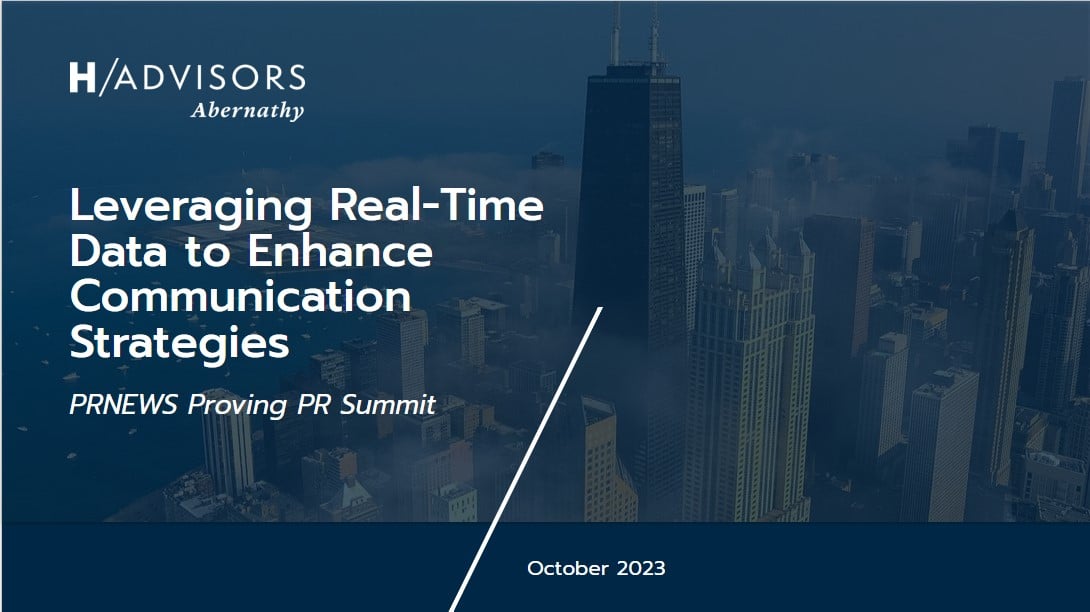Leveraging Data to Enhance Communications Strategies in Real Time
I recently spoke at the 2023 PRNEWS Proving PR Performance Summit to share my thoughts on how communications professionals can “Leverage Data to Enhance Communications Strategies in Real Time.”
Dozens of fellow data and analytics experts from across the country joined the conversation to explore measurement trends, case studies and best practices that translate into real world advice for public relations professionals.
The assembled experts from across industries touched on topics like:
- Emerging PR campaign metrics you need to start using now
- New AI platforms and how to lean on them in 2024
- Linking impact strategy with meaningful metrics
- How to apply data insights to safeguard your brand’s reputation
- Creating a “real-time data” measurement blueprint
- Measuring and optimizing internal communications
- Creating a measurement culture
With H/advisors Abernathy’s keen focus on crisis and critical issues we recognize that data analysis can be a daunting task when your communications needs are urgent. This often leads communications professionals to rely solely on experience and gut instincts rather than also relying on recent and relevant data to support their advice.
To address that challenge, we went through four key steps to help translate real-time data into well thought out communications strategy.
1. Analyze your data sources and signals: Whether data sources come from traditional or social media and beyond, it’s imperative to understand how they work together to tell a story that informs your strategic approach. To do so, you should have a clear understanding of what data matters the most, if that data is impactful to key stakeholders and whether the company can use the data to plot a course of action.
2. Define your real-time data needs: Every situation has a unique cadence that defines how and what data might change and how those shifts can impact the business challenge. Outlining those distinct pulse points when dealing with a crisis offers insights into what real-time windows offer the best data, what metrics are impacted by time and how to develop a framework for reporting on how the issue is unfolding.
3. Identify the most actionable information: Not every data point will require action, so it is important to sort through the metrics that will determine whether a response is necessary, identify the most salient insights from within the data funnel and to figure which metrics you can control.
4. Determine the scope and scale of strategic shifts: Even with an infusion of data into the decision-making process, some things will remain a reality in the context of a crisis. In these instances, it is important to distinguish what elements of the situation could change as the result of data shifts from those that cannot change regardless of what the data says.





